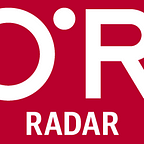How the New Hardware Movement is driving the Internet of Things
By Jon Bruner
The Internet of Things (IoT) has been committing a lot of buzzword imperialism lately. It’s a hot term, marching across the technological countryside and looking for rich disciplines to capture. Electronics, manufacturing, and robotics, among others, have all become dominions of the IoT. The result is that the meaning of IoT has broadened to include practically anything that involves 1. technology, and 2. something physical.
At the same time, practitioners have been trying to escape the IoT — and its early association with Internet-connected refrigerators — for years. Big enterprises that want to develop serious applications for the Internet of Things have come up with other terms for what they’re doing, like Internet of Everything (Cisco) and Industrial Internet (GE).
Let’s put a stop to this and define some boundaries. In my view, the Internet of Things is the result of a much larger and more important movement that’s about making the physical environment accessible in the same way that the Internet has become accessible over the last 20 years. I’ll call this the “new hardware movement.”
Hardware development is becoming an agile discipline, and is starting to look much more like software development. This is partly because new tools — prototyping, supply chain, and marketing — have made it easier to develop and ship hardware flexibly and on short timelines. It’s also happening because computing is available at low cost in many places where it wasn’t before, and this has made it possible to solve problems in software that previously would have been solved, expensively and inflexibly, in hardware. (You’ll see all of these represented in the pop-up factory at Solid.)
So, hardware can be deployed in all sorts of ways that it couldn’t before, and at much lower cost. That means computing can extend into many places where it couldn’t before — like cornfields and streetlights. As it gets easier to deploy, intelligent hardware will find its way into practically every business — in the same way that going from mainframes to PCs made computing a feasible component of every business, and the Web made it possible to put every business on the Internet.
At the same time, the Internet of Things has emerged as the business imperative that follows big data. Data science has already revolutionized every industry that touches the Internet. The Internet of Things promises to “Internetize” more industries and enable them to adopt the disciplined, data-driven business models that their Web-enabled counterparts have already built.
Where this way of doing business has been available only to fields like advertising, finance, and online retail, it is now becoming available to industries that operate in the physical environment: logistics, agriculture, heavy industry, healthcare, mining, etc.
The Internet of Things and the new hardware movement are not the same thing.
